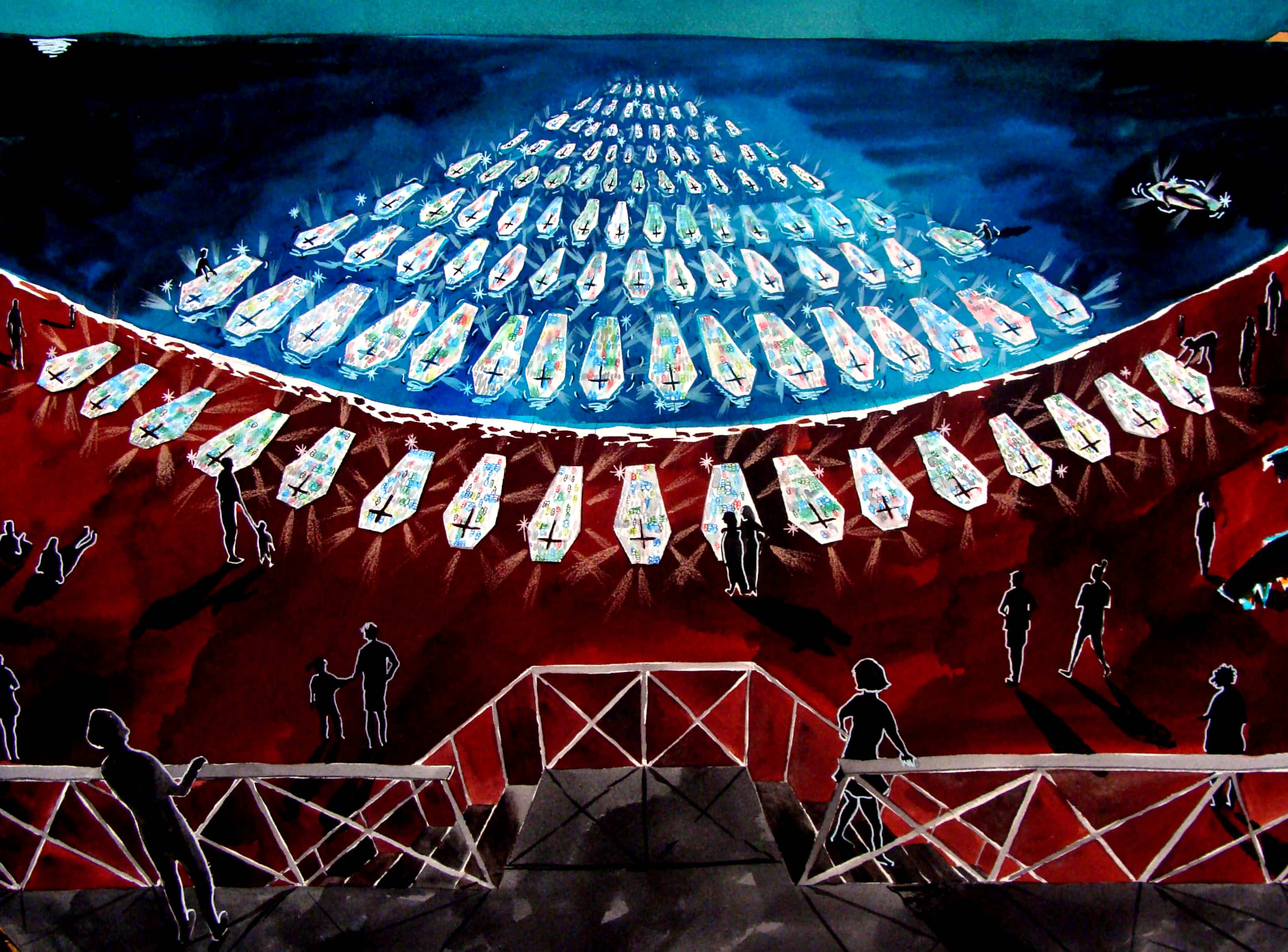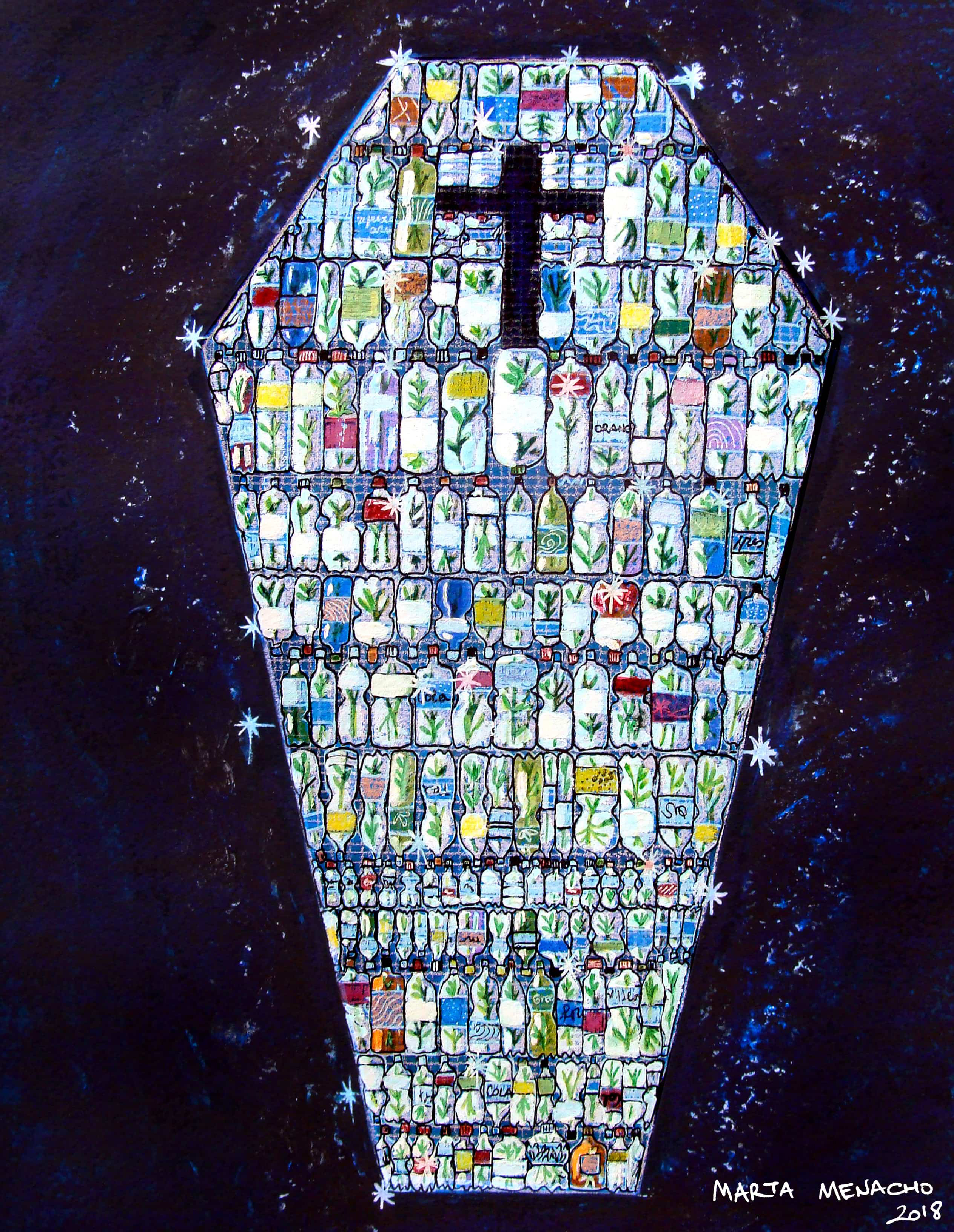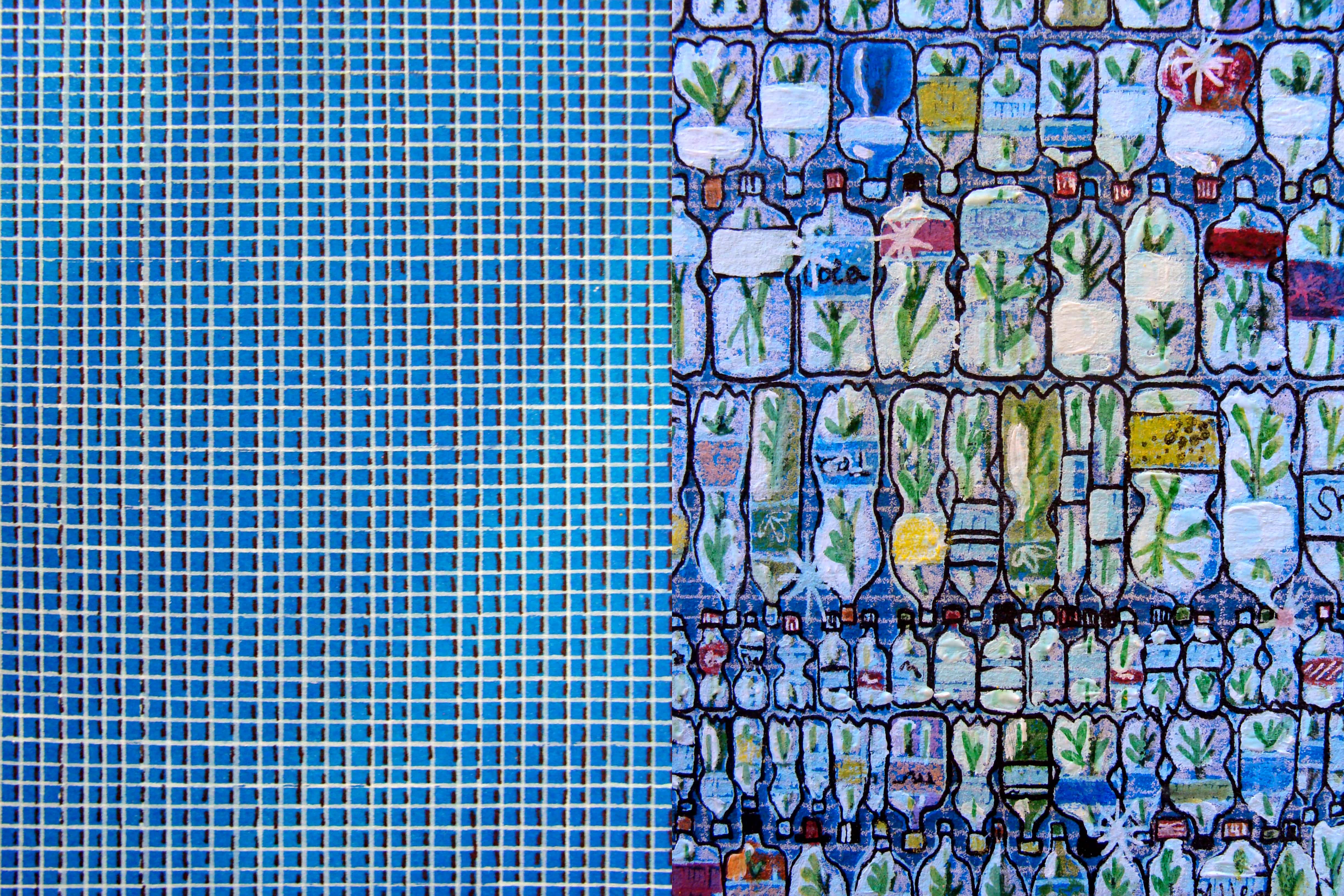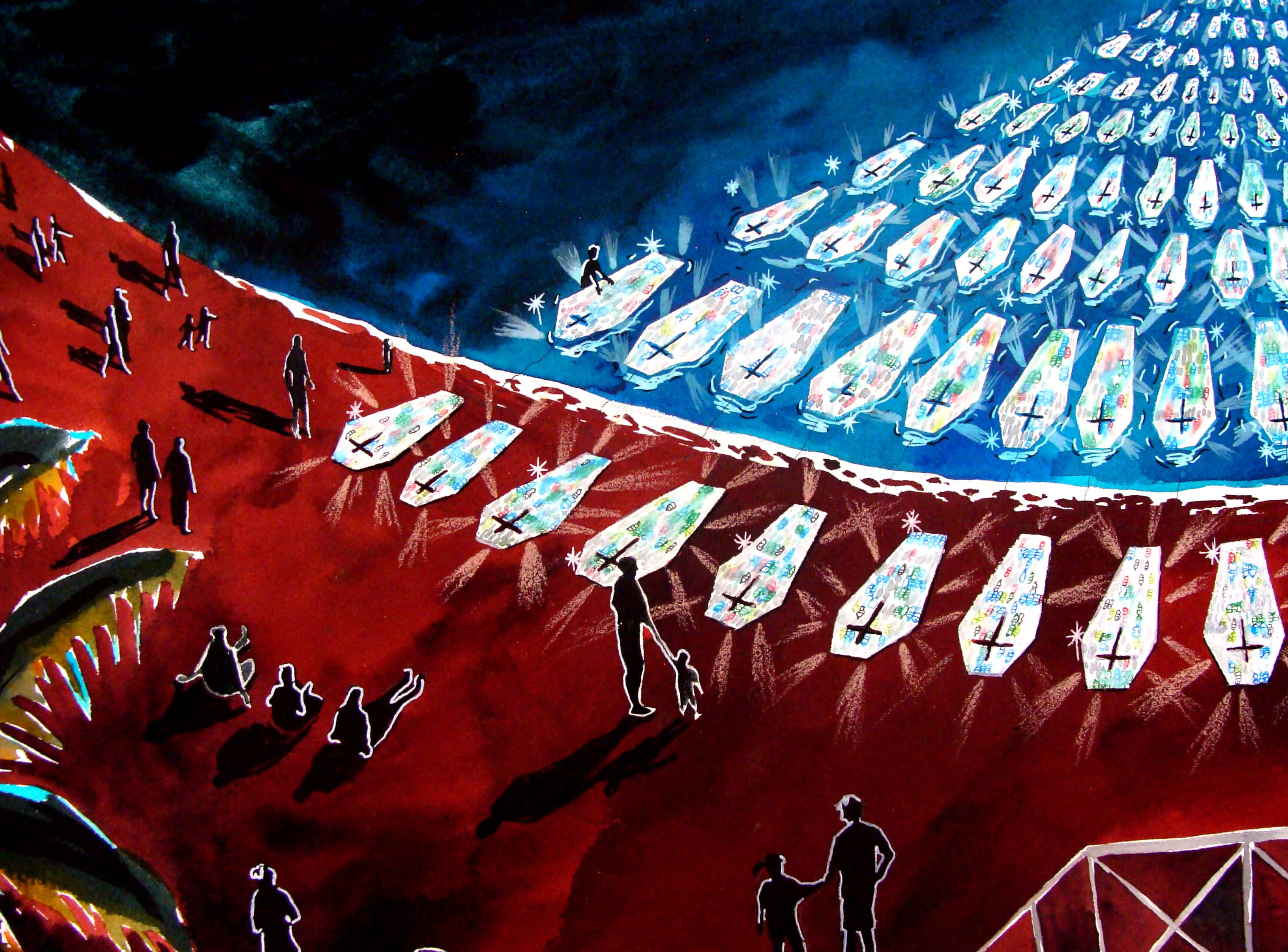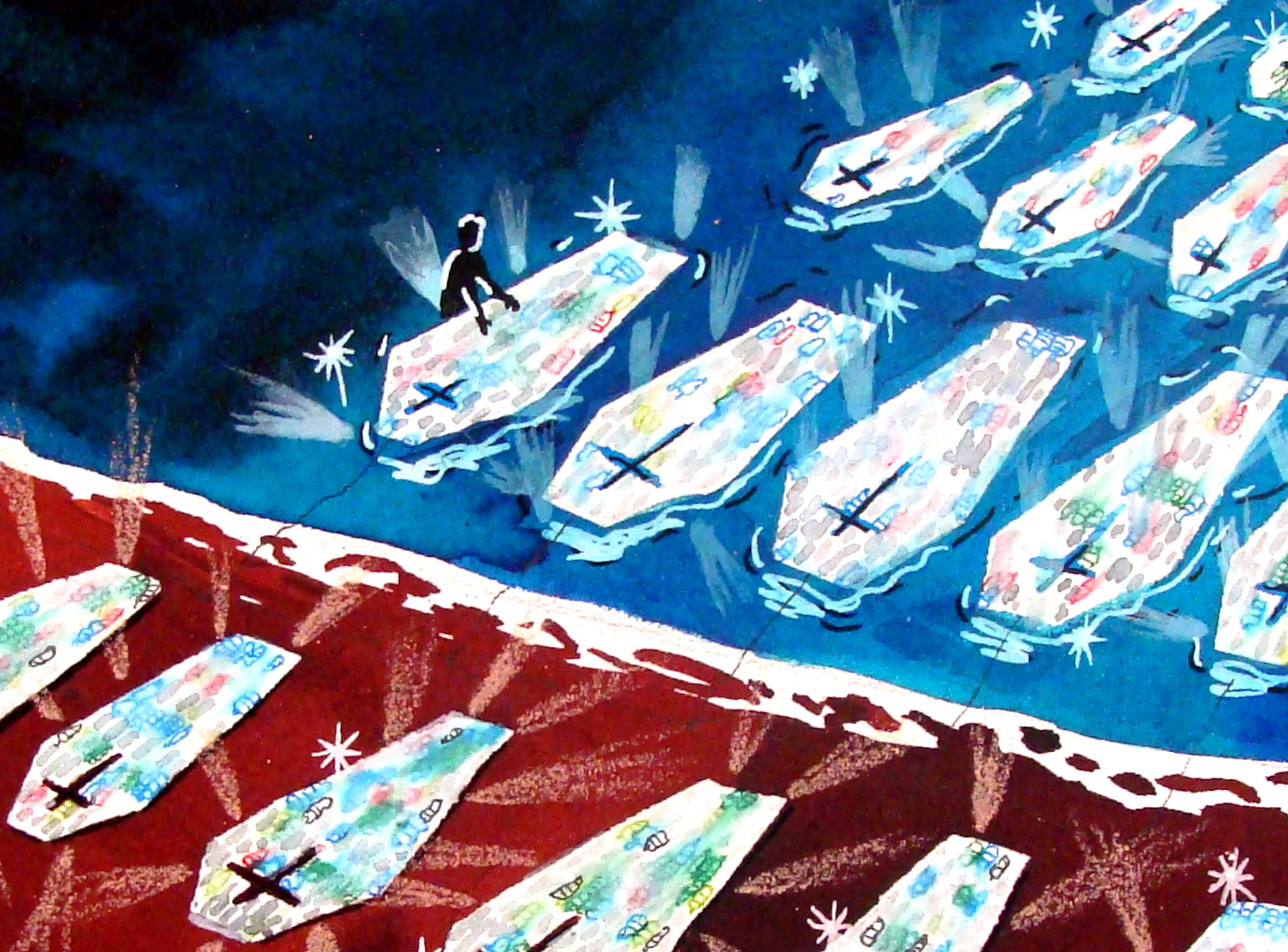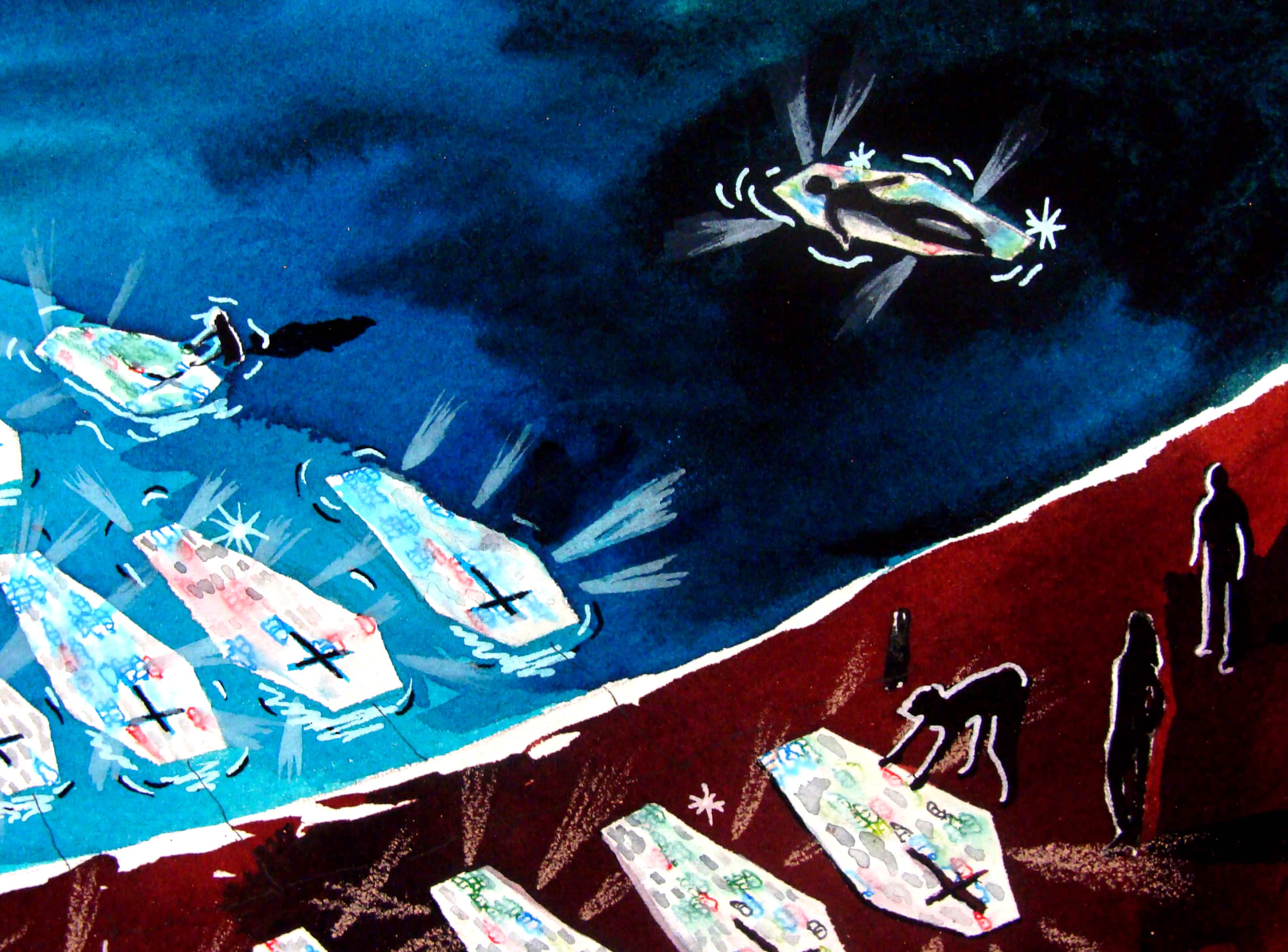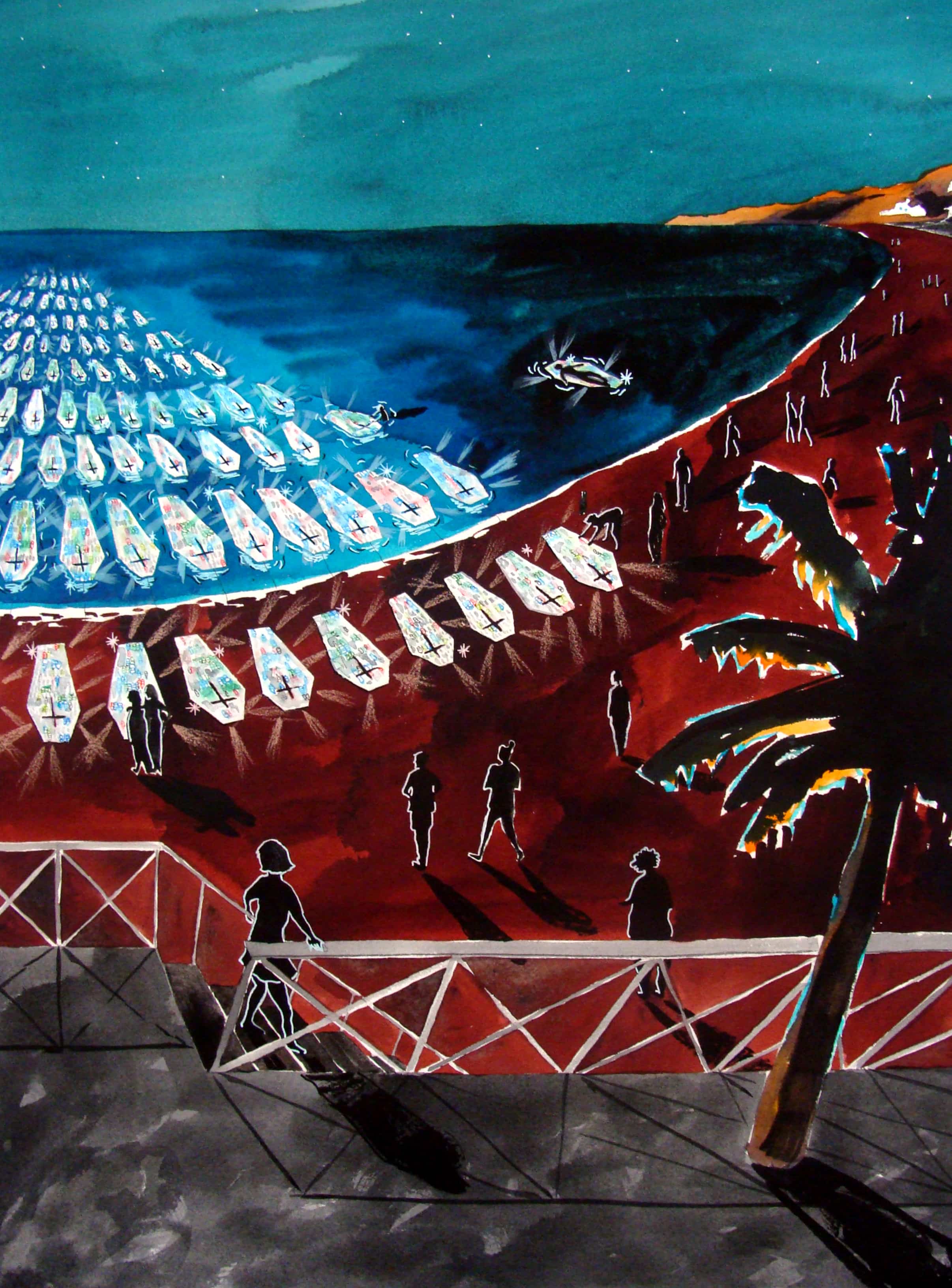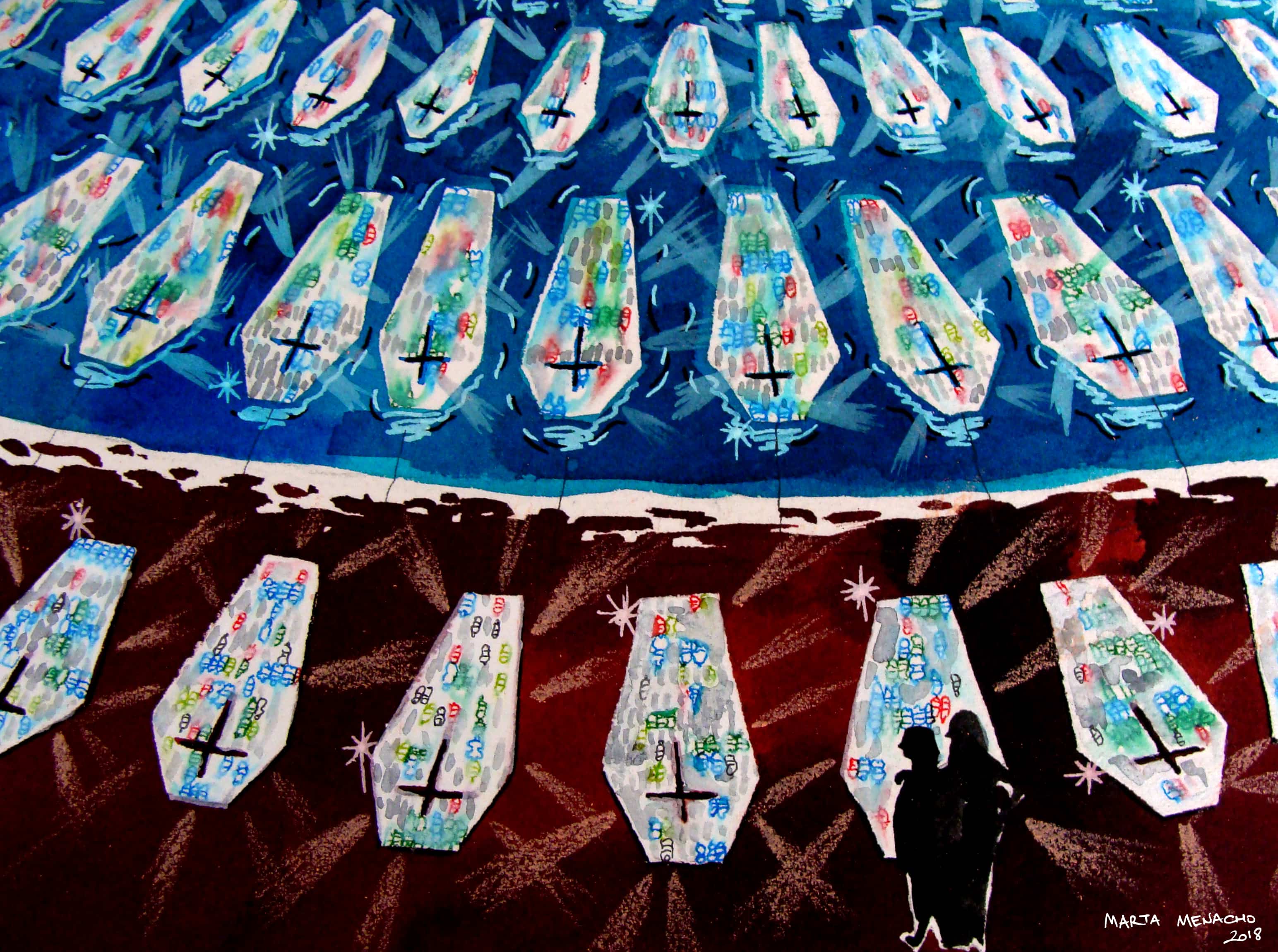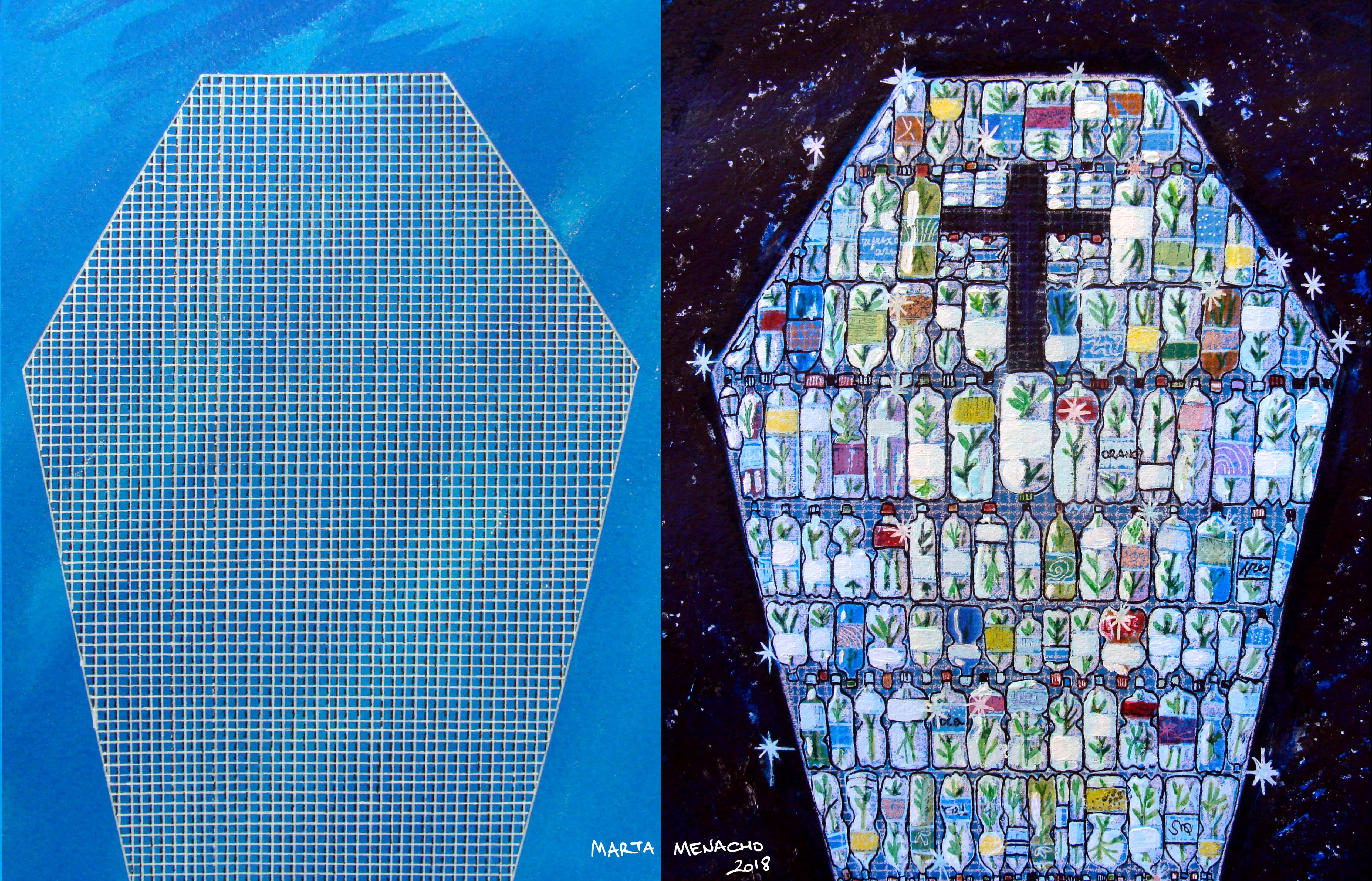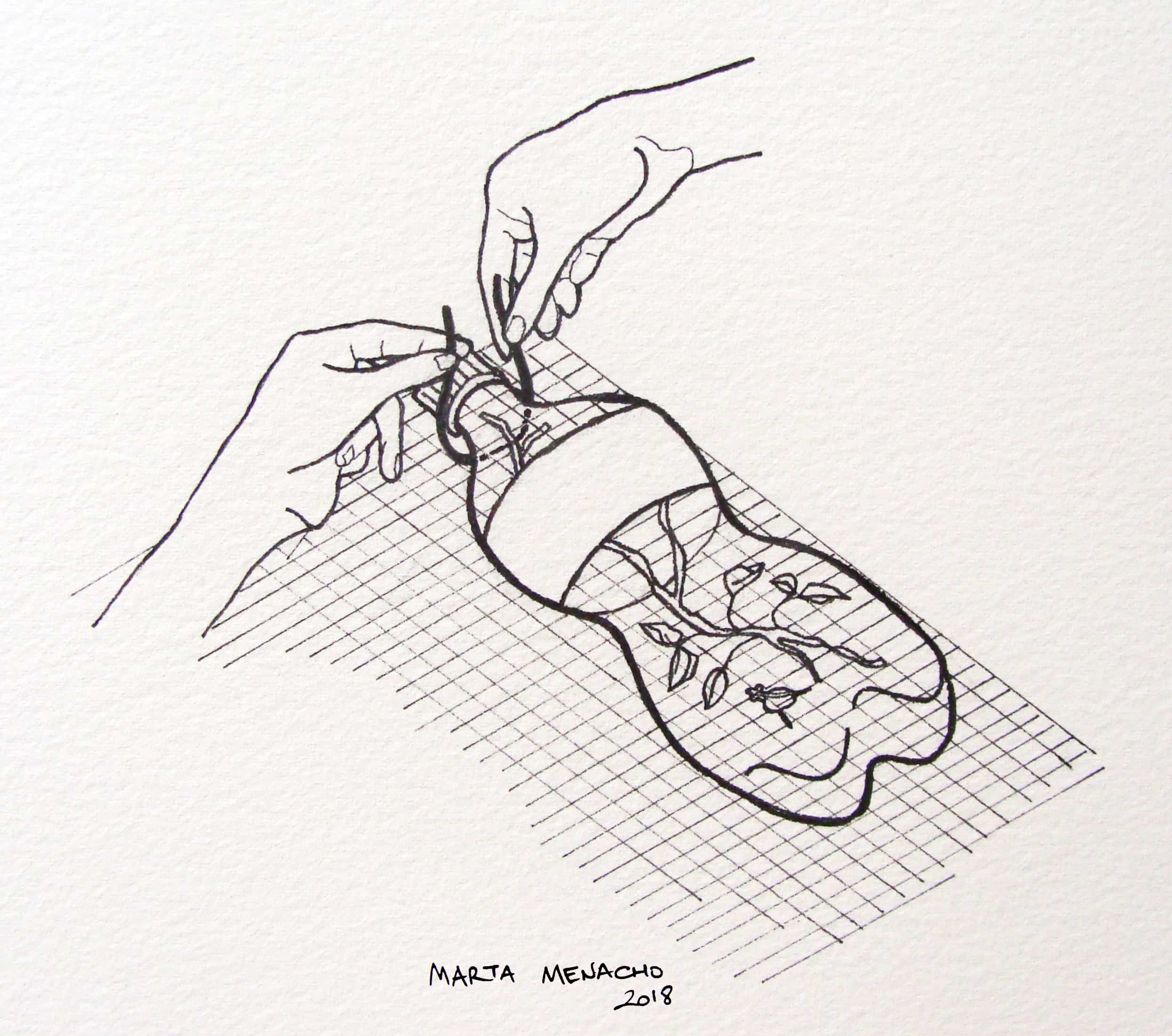Plastic cemetery / Cementerio de plásticos
When we look at the sea, which is something we usually do in summer, we can’t help thinking about everything we are killing in it with our reckless consumption habits.
So, we came up with the idea of creating a piece representing a floating cemetery which can be understood at first sight and easily executed.
We would make it with recycled bottles joint together carefully to shape them into coffins which we would place on the water imitating boats moored at berth before they set out to the sea.
The way we have conceived it, this piece would be made up of 100 floating rafts built with a chicken coop mesh which we would shape into a coffin to which we would attach recycled plastic bottles of many shapes and colors collected from local consumers.
These would have to be clean, well arranged and closed, so they wouldn’t sink. We would keep the labels because, apart from lending color, they allow us to know which drinks are the most consumed at the location where we’re working.
We would collect twigs and weeds in the surrounding area and put them inside the bottles which would wither after a few days. This would allow us to show the deterioration of life when it is contact with plastic.
The entire surface of the bottles would be lighted, leaving the shape of the cross unlighted to bring out the shape of the floating coffins.
All the pieces would be placed at the beach, in the sea as well as over the sand, carefully moored to maintain an arrangement resembling a cemetery.
After the exhibition, visitors could take the rafts and maybe use them as air mattresses.
Drawings by Marta Menacho.
—————-
Mirando al mar, algo que solemos hacer en verano, es inevitable pensar en todo lo que estamos matando en él con nuestros hábitos de consumo irresponsables.
Y se nos ocurrió la idea de llevar a cabo una pieza que represente un cementerio flotante, entendible a primera vista y de fácil resolución.
La haríamos con botellas recicladas, unidas entre sí cuidadosamente para conseguir la forma de ataúdes, que colocaríamos en el agua, simulando barcas amarradas en el puerto esperando para hacerse a la mar.
La pieza, tal como la imaginamos, constaría de unas 100 balsas flotantes, construidas a partir de una malla de gallinero a la que daríamos la forma de ataúd, y a la que sujetaríamos botellas de plástico recicladas del consumo local, de muy variadas formas y colores.
Estas deberían estar limpias, bien ordenadas y cerradas, para que no se hundan. Mantendríamos las etiquetas, ya que ademas de dar color, siempre nos ayudan a saber qué bebidas son las mas consumidas en el contexto en el que estamos trabajamos.
En el interior de las botellas guardaríamos ramas y malas hierbas, recogidas del entorno y que con el paso de los días se irán secando. Esto nos permitirá mostrar de una manera visual, el deterioro de la vida cuando está en contacto con el plástico.
Toda la superficie de botellas se iluminaría, dejando a oscuras la forma de una cruz que hará mas reconocible la forma de los ataúdes flotantes.
Todas las piezas se colocarán en la playa, dentro del mar y también en la arena, amarradas con sumo cuidado para mantener una forma ordenada imprescindible para simular que se trata de un cementerio.
Al finalizar el tiempo de exposición, los visitantes se podrían llevar las balsas y quizás usarlas como colchonetas de playa.
Dibujos de marta menacho.

